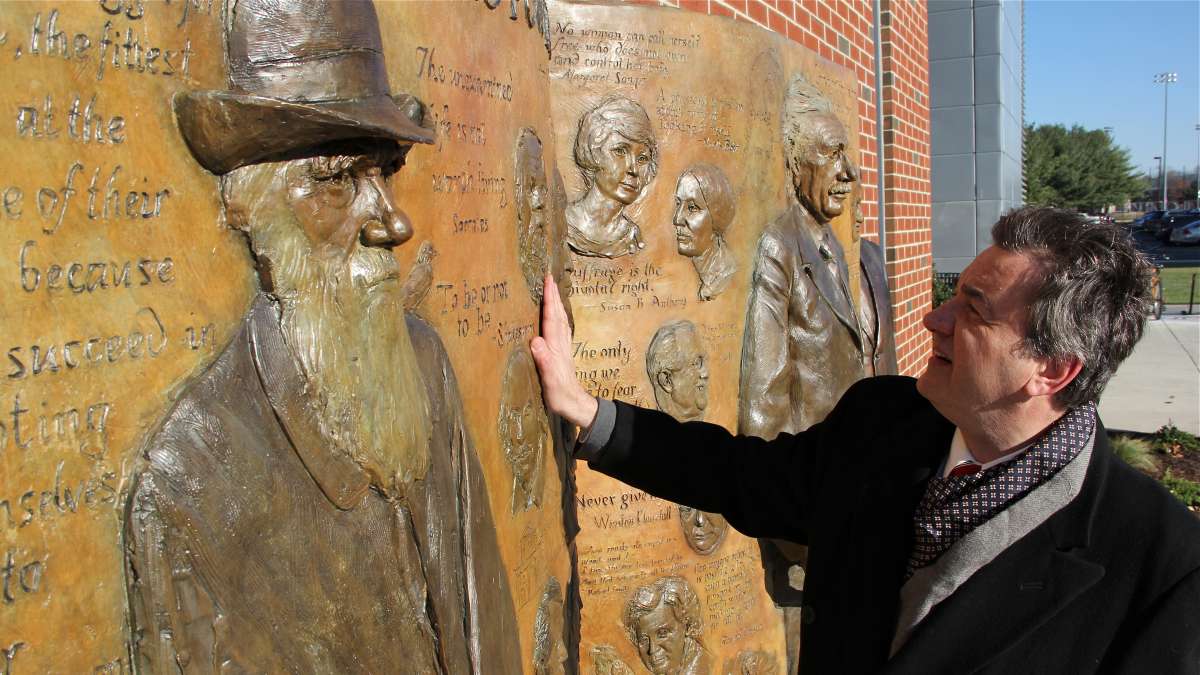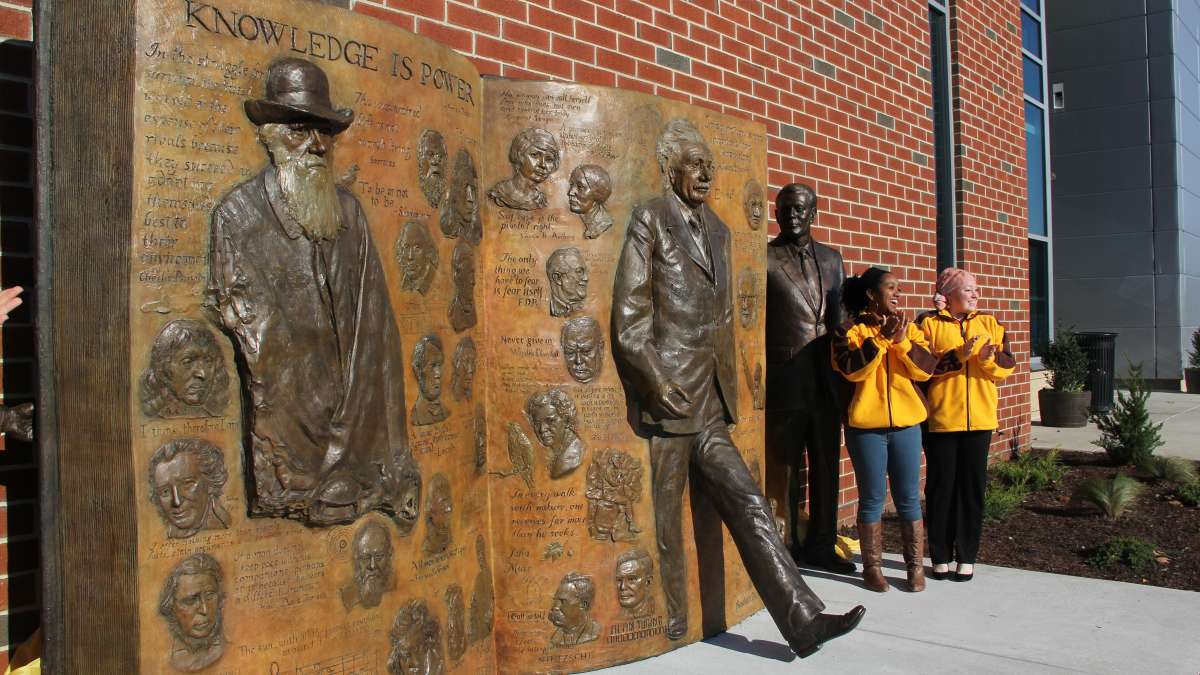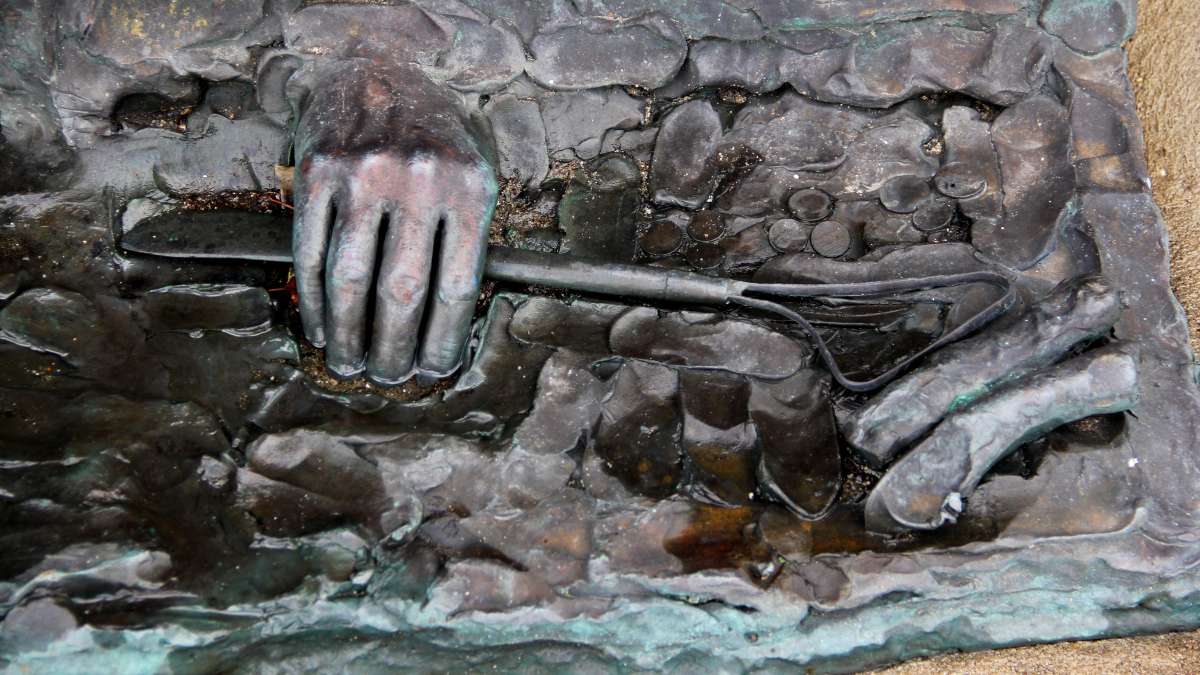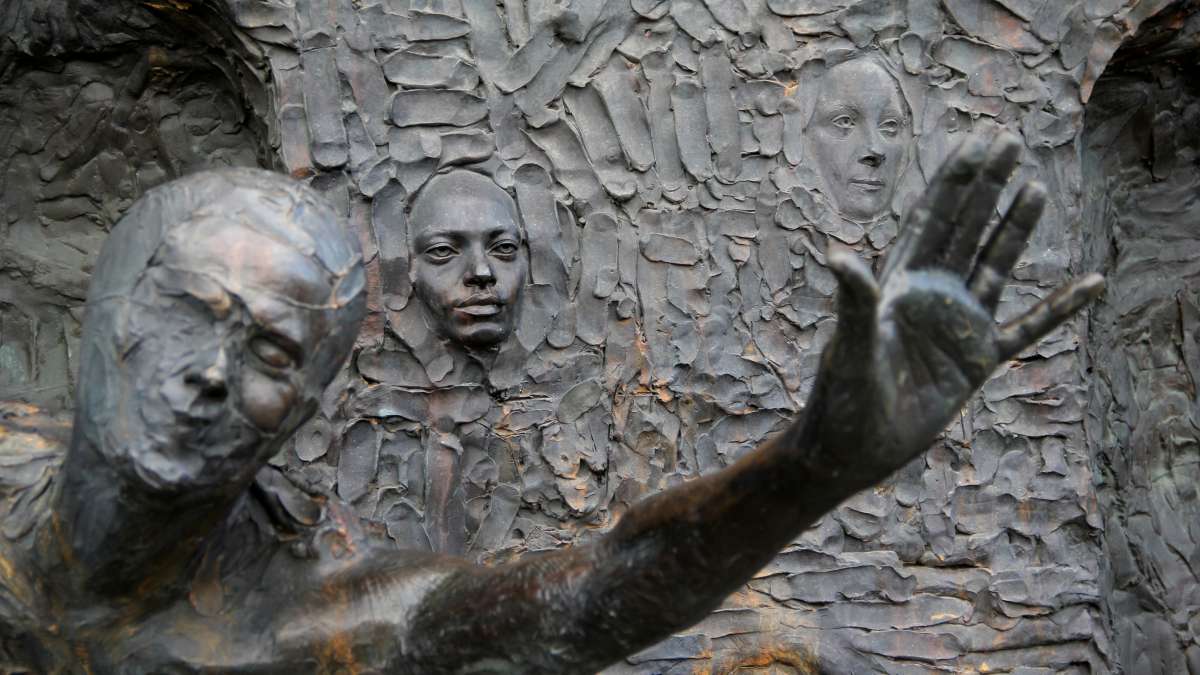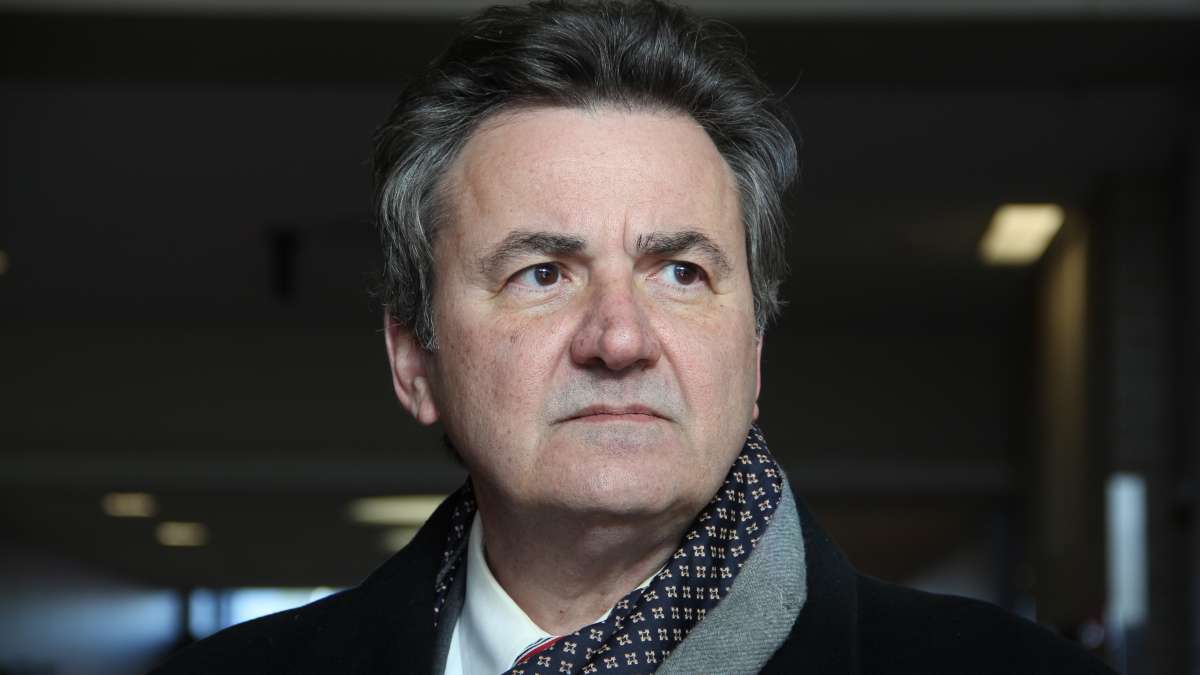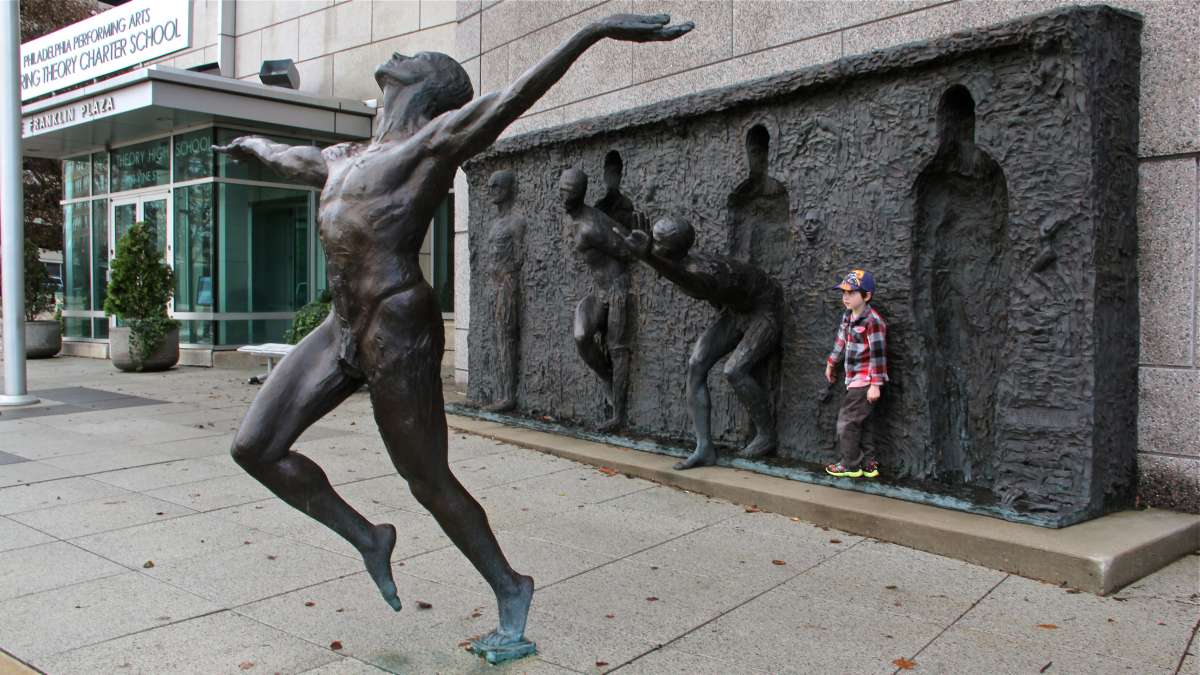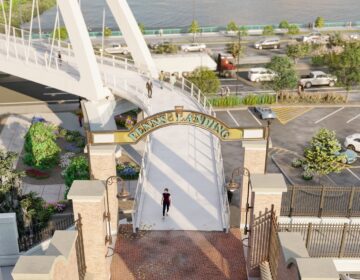From ‘Freedom’ to ‘Knowledge,’ Philly-area sculptor’s work strikes chords around the world
ListenOne of Philadelphia’s most iconic public sculptures, admired by global audiences who have never set foot in the city, is tucked into an obscure corner in front of a former pharmaceutical building.
“Freedom” (2001) depicts a figure in four movements, in the process of extracting himself from the exterior wall of what used to be the GlaxoSmithKline building at 16th and Vine. It’s now a charter school.
Recently it has been showing up on best-of lists, including the British newspaper The Independent, which called “Freedom” one of the best pieces of public art in the world.
“Every day, I hear from people who, for them, it represents freedom,” said sculptor Zenos Frudakis. “I get people from Iran, from Cambodia, Nepal, Australia. “Sometimes it’s political, freedom, sometimes it’s personal freedom — getting free of an addiction or marital situation.”
He leaves interpretation up to the viewer. The sculpture includes a hollow niche left behind by the figure, who finally bursts free of the wall. “I literally left a place people could step into,” said Frudakis.
Frudakis visited Rowan University in Glassboro, New Jersey, last week to unveil his newest commission, “Knowledge Is Power,” an 8- by 12-foot bronze of an open book. Faces and figures of philosophers, writers, and scientists emerge from the pages.
“It represents knowledge of people in the past – the giants who created the collection of knowledge that puts us where we are,” said Rowan President Ali Houshmand. “It’s very important to be on this campus. This, being on campus, is more important than being in downtown Glassboro or downtown Philadelphia, because of the students.”
The new sculpture features quotes attributed to 31 artists and intellectuals, from Socrates to Isadora Duncan to Alan Turing. Sometimes they contradict each other, as Francis Bacon’s “knowledge is power,” seems to rub against Albert Einstein’s “imagination is more important than knowledge.”
“You read enough, you’ll read contradictory statements and you have to decide what is right and truthful,” said Frudakis, who says he has read works by most of the figures in the sculpture, sometimes by listening to books on tape while working in his studio, in Glenside, Pennsylvania.
The $1 million sculpture was commissioned by Francesca Shaughnessy, 89, a former psychologist with the Philadelphia School District.
The sculpted faces in relief revolved around two figures of Charles Darwin and Albert Einstein, for reasons both editorial (Frudakis regards them as two giants of modern thought) and aesthetic (the figures visually organize the swirl of faces and text). Like the “Freedom” sculpture, Einstein is emerging from the bronze book, with leg outstretched in the air.
“He was breaking out into the fourth dimension, with time-space,” said Frudakis. “Sculpture tends to be static, because it’s bronze. I wanted ‘Freedom’ to have a sense of movement. So it’s really one figure in four motions of struggling and breaking free. With ‘Knowledge,’ it’s breaking out of a plane of width and height.”
Frudakis is juggling several commissions; one is a statue of Joe Paterno, commissioned by alumni of Penn State University, expected to be erected in State College later next year. The administration of Penn State removed its own statue of the revered coach, which had been outside of its stadium, after the Jerry Sandusky scandal erupted.
WHYY is your source for fact-based, in-depth journalism and information. As a nonprofit organization, we rely on financial support from readers like you. Please give today.



